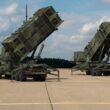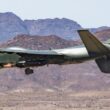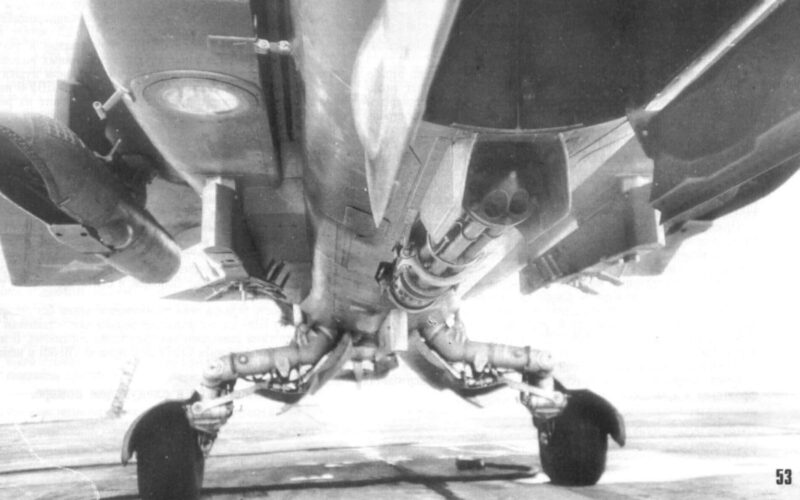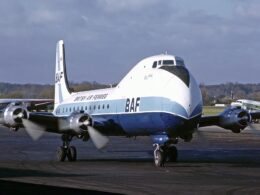Everybody knows the GAU-8 Avenger, the famous 30-millimeter rotary cannon mounted on the American A-10 attack aircraft. A Soviet counterpart to that weapon is a lot less known, despite being, arguably, a more powerful gun. The problem was, all that power acted to the detriment of the weapon.
In the 1970s, both the Americans and the Soviets encountered the same problem: overwhelming armor of their cold-war adversaries. For Americans, a large number of Soviet main battle tanks called for a robust, low-cost, mass-producible weapon that could stop enemy armor in its tracks. A requirement to arm the new close air support (CAS) aircraft with a rapid-fire 30 mm cannon was raised.
For the Soviets, the American light armor proved more of a headache. A new generation of armored personnel carriers could no longer be defeated with 23 mm cannons carried by most ground attack aircraft and fighter jets. So, there was a need to develop something bigger.
A brand new Mikoyan-Gurevich MiG-27, introduced in 1975, seemed like a perfect fit for experimenting with such upgrades. A variant of a successful MiG-23 fighter jet, it had sufficient payload capacity and adaptability to be turned into a real can opener.
And the Soviet Union already had something to mount on it: AO-18, an experimental 30 mm rotary cannon developed in the mid-60s for the anti-aircraft role.
Inner workings of the monster
While the fascination with Gatling-system weapons, which arose in the US after WWII, is a widely-known phenomenon, a lot less known for the Western public is its complete mirroring in the Soviet Union. Russia was one of the most active importers of the original Gatling guns back in the 19th century and actively experimented with the design in the interwar years.
But there was one crucial difference in approaches the countries took. American Project Vulcan, which resulted in the M61 20 mm rotary cannon and its many offsprings, was based on adding an electric drive to the original weapon, developed by Richard Jordan Gatling a century ago. The gun would have multiple barrels on a rotary mount, all using the clockwise rotation to perform a firing-reloading sequence. The old Gatlings would be rotated with the help of a handle, cranked by an operator; the new ones would employ an electric engine for that purpose.
The Soviet approach was different. After all, if regular machineguns and autocannons can fire and reload without using external power input, why can’t rotary ones do the same? If there was a way to transfer the power, harnessed from the fired round, into the rotary motion of the barrels, such a gun would not require any external engine.
Germans had experimented with something like this since WWI, but the first somewhat successful design appeared only in the late 30s, built by Soviet engineer Ivan Slostin. In the 50s and 60s, Soviets returned to the idea, adapting it where rapid-fire weapons were needed the most: in the anti-aircraft role.
Several cannons of various calibers were developed, all gas-operated: after firing, a part of gasses escaping the barrel was diverted through a small opening, pushing a piston located nearby not unlike in most modern assault rifles and light machineguns. The motion would later be transferred into the rotation of barrels, which would cycle firing and reloading mechanisms.
This has some advantages in comparison with electric-powered Gatling guns. The weight of the system is lower, it is more compact – no need to lug heavy engine and batteries around. Gas-powered rotary guns also reach their maximum rate of power instantaneously, while electric-powered ones have to wind up, making it impractical to fire short bursts.
On the other hand, gas-operated Gatlings are more mechanically complex, thus arguably more expensive and less reliable – disadvantages that are not that difficult to counter, but tend to drive up the cost of the system quite a lot. Despite that cost, the Soviets were willing to experiment.
Creating the beast
It is difficult to say how many less-than-successful designs preceded the AO-18, but by 1965, the system ‒ under the name GSh-6-30K ‒ was deemed reliable enough to be mass-produced and mounted as a defensive weapon on Soviet ships.
A decade later, it was taken as a basis for the new aircraft cannon. A heavy cooling system was removed, barrels were shortened, and a number of other weight-saving measures were undertaken. The empty weight of the weapon was reduced to just 149 kilograms (329 pounds) – almost half of what the GAU-8 weighs. It was named the GSh-6-30A.
New rounds were developed, to supplement high-explosive and tracer rounds fired by the anti-aircraft version. High-explosive-incendiary, high-explosive-incendiary-tracer, incendiary and high-explosive-armor-piercing shells weighed almost half-a-kilogram each and had a muzzle velocity of up to 850 m/s.
The shells were smaller and slower than those of the GAU-8, and there was nothing like the American depleted uranium core rounds in development. While in initial stages there was an ambition to create a weapon that could counter the new M1 Abrams main battle tank, the focus was on lighter armored vehicles, hence, the gun was not a true tank buster.
But it would make short work of any lighter vehicle, especially with high-explosive rounds. It was also designed for higher rates of fire: 5,500-6,100 rounds per minute versus the GAU-8’s maximum of 4,200, and if Americans reduced it to 3,900, the Soviets, at least initially, did not plan to do so. In the end, when firing, the GSh-6-30 would send substantially more weight towards the target than the GAU-8 ever could, leading the manufacturer, KBP Instrument Design Bureau, to brag of designing the most powerful aircraft cannon ever.
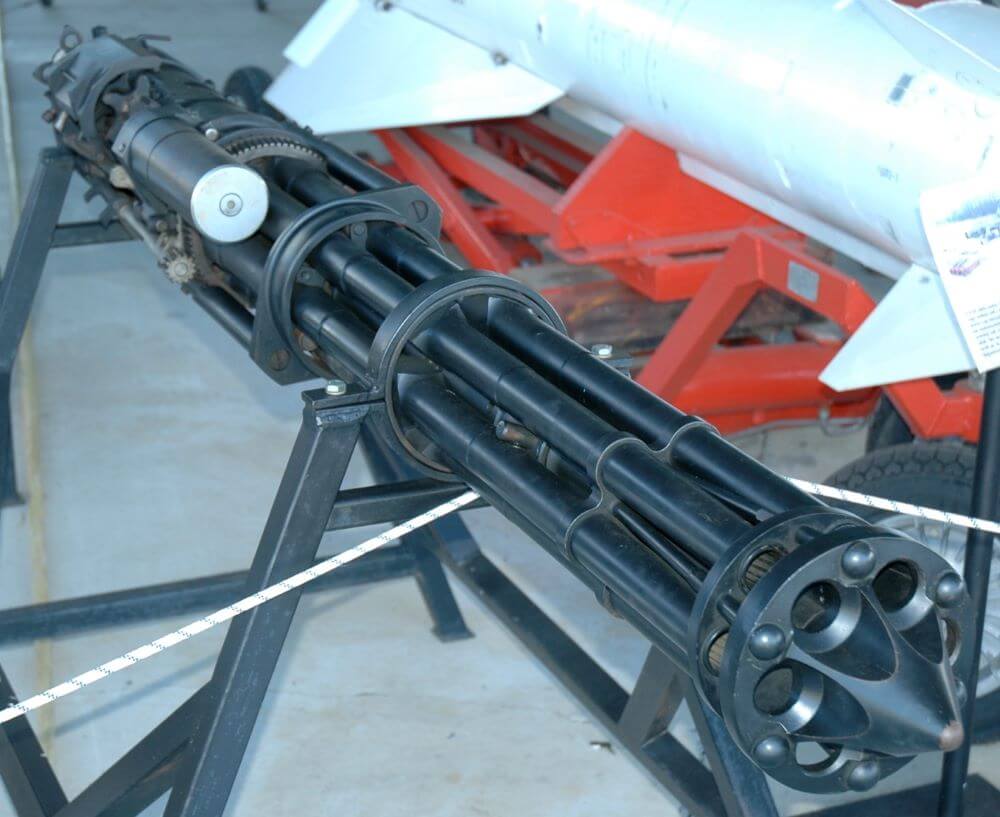
(Image: VargaA / Wikipedia)
The problems
All they needed to do was to mount it on an aircraft somehow.
MiG-27 had a place for a cannon on the underside, but that place was by far not large enough to fit the new gun. Shortening of the barrels solved part of the problem. Putting the gun in a way that it would be only half-covered by the fuselage solved another half.
As a result, it is very easy to spot the MiG-27 fitted with the GSh-6-30: there is a massive contraption of barrels sticking out of its belly.
While the first MiG-27s were equipped with substantially smaller GSh-23, the up-gunned version started rolling out right after the aircraft adoption in 1975. One of its main problems was that at least at first it actually performed quite well and only by the late 80s problems started appearing.
That could have been due to its proliferation, as more and more units received the plane; or it could have been due to wear and tear the weapon was subjecting its carriers to. In any case, the initial reputation of this new powerful weapon for taking out American armor was quickly replaced by a less glamorous one, connected to self-inflicted destruction.
The GSh-6-30A was fitted with a massive muzzle brake which reduced recoil to a somewhat manageable degree but redirected part of exhaust gasses to the side – impacting the airframe and increasing vibration.
That vibration was, by all accounts, quite unmanageable. While the MiG-27 itself was a pleasant aircraft to fly, when firing this beast of a weapon there was – according to pilots – a sensible feeling of dread all around. The American A-10 solved the same problem by employing a sophisticated computer control system: basically, as soon as the weapon was fired, the autopilot would overtake the control of the plane and try to prevent it from jumping around. The MiG-27 did not have such a system.
So, there was a danger of the airplane spinning out of control due to the recoil which was more powerful than both of its jet engines combined. But that danger would rarely be real, as firing the gun in longer bursts would result in other kinds of damage.
A burst of 300 rounds (3 seconds) would jam the cannon. Even less than that was enough to cause permanent damage to the airframe. Ground crews would usually restrict the bursts to 40 rounds by adding a gap between cartridges while loading, although the weapon itself had a habit of overstraining the ammo belt and tearing it apart.
The firing would constantly strain the airframe and the gun mount, so much so that its wear became a permanent problem. In addition to damaging the airframe, the vibration would constantly damage electronics and other systems.
Numerous times, after firing the gun, pilots would find the forward landing gear jammed. Sometimes the recoil would deform one of the fuel tanks and jam the fuel pump. Sometimes, the gunsight would shatter. Electronics were suffering the most though: pretty much every system could, and was, damaged by vibration, often leaving the aircraft without computers, lights, gyroscopes, and communication equipment.
In the late 80s, it was decided to reduce the firing speed to 4,000 rounds per minute, leaving the title of “the most powerful aircraft gun” behind. That reduced problems somewhat, but they persisted nonetheless. In 1989, one pilot had an instrument panel fall out, its bolts succumbing to vibration. The same year another pilot’s canopy was jettisoned after its mechanism was accidentally triggered by vibration.
Such accidents would usually result in light, easily repairable damage, even if pilots would have to perform an emergency landing in an unpowered plane or without landing gear. But not all of them were so lucky. In several cases the gun would overheat causing its ammunition to explode, leading to fire onboard the aircraft. It is difficult to find information on casualties of such accidents, but the loss of an airframe was pretty much guaranteed in these cases.
In the end, while the MiG-27 is usually considered to be a successful aircraft, the GSh-6-30 was not a part of this success. It was an impressive weapon and an immense engineering achievement, but for all intents and purposes, Soviet aviation would probably have been better off without it.
Thankfully, the Cold War never turned hot, preventing the gun from becoming the can opener it was designed to be. Counterintuitively, it ended up performing as an anti-aircraft cannon most of the time, although the aircraft it was destroying did not belong to the enemy


